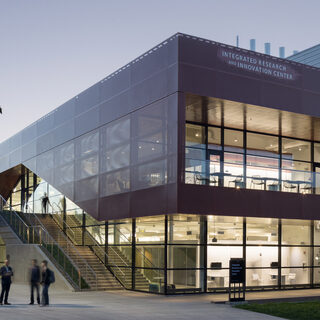Tradeline's industry reports are a must-read resource for those involved in facilities planning and management. Reports include management case studies, current and in-depth project profiles, and editorials on the latest facilities management issues.
Latest Reports
Hub of Collaboration, Learning, Creativity, and Groundbreaking Technology at the Heart of George Mason University’s Core Campus Project
George Mason University’s new Horizon Hall is being called a “game changer” as it anchors the Core Campus Project, which facilitates multidisciplinary education, active student learning, and technological innovation with ample flexibility to accommodate evolving teaching modalities. In addition to this new construction, the project includes theater renovations; the addition of green spaces, such as a meditation garden and amphitheater; expansion of a central outdoor space; the demolition of two older buildings; and extensive upgrades to the utility infrastructure.
Universities Opting for Renovation of STEM Facilities vs. New Construction
Time and money restrictions are prompting some universities to ditch plans for new construction in favor of renovation or expansion to accommodate their science, technology, engineering, and mathematics (STEM) programs. Opting to renovate requires stakeholders to evaluate the existing building for the ability to accommodate the equipment and infrastructure needed to provide the best user experiences in the most versatile spaces, the highest level of productivity, and ample flexibility for future programs.
Cell and Gene Therapy R&D is Driving a Large Portion of the Life Sciences Boom
The booming life sciences industry, whose investment in corporate research and development spending more than doubled during the last decade to $212 billion in 2020, is giving birth to millions of square feet of new research laboratory space in the U.S.—29 million sf in 2019, up from 17 million sf in 2009. Much of that recent growth is in gene and cell therapy R&D.
Space Reduction and Strategic Relocation at University of Missouri
The University of Missouri (MU) has undertaken a major space reduction and relocation project on its main Columbia campus, with a goal of eliminating 1 million gsf by 2024—250,000 gsf more than originally planned. A shortage of maintenance funding prompted the project, as the school faced an $881 million backlog in deferred maintenance and building needs for the affected properties. Over the past 10-15 years, the state has experienced financial challenges resulting in stagnant or reduced maintenance funding, and tuition-generated funding cannot make up the difference needed for proper building maintenance. The Strategic Space Reduction and Relocation Plan will reduce the university’s current deferred maintenance and capital needs backlog by over $200 million and save approximately $9 million in annual operations costs if the stated goals are met. By the end of 2022, MU will have eliminated 623,917 gsf through demolition and divesting of properties.
Design and Operational Lessons Learned at the University of Idaho’s Integrated Research and Innovation Center
Since its opening in 2017, the University of Idaho’s 78,500-gsf Integrated Research and Innovation Center (IRIC) has attracted a cumulative total of $144 million in grant funding, roughly 20 percent of all the research dollars coming to the school. Among other signs of success, the $52 million, three-story structure has hosted 30 different research teams whose work has generated 35 Ph.Ds., 77 master’s degrees, and close to 900 publications. Offering wet and dry labs, offices, collaboration spaces, core research facilities, and event space, the building breaks away from the traditional research paradigm to focus on projects rather than faculty or departments. But the design and operation have presented some challenges in the first five years, including a wall of south-facing windows, concrete lab flooring, and a small loading dock.




